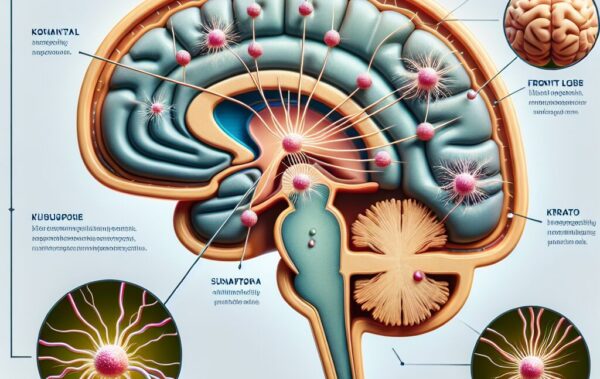- Overview of Kratom and its active compounds
- Kratom’s mechanism of action in the context of opioid withdrawal
- Clinical evidence supporting Kratom’s efficacy for withdrawal symptoms
- Potential risks and considerations in using Kratom for opioid withdrawal
- Frequently asked questions about Kratom use in opioid withdrawal
Kratom, scientifically known as Mitragyna speciosa, is an evergreen tree indigenous to Southeast Asia. It has been used traditionally for its medicinal properties, by chewing its leaves or brewing them into a tea. But, as modern needs evolve, so have the forms of consumption. Kratom is now readily available in various forms, from powders to liquid extracts, and each finds its niche in the market and in consumers’ lives.
The active compounds in Kratom, primarily mitragynine and 7-hydroxymitragynine, are alkaloids that have been the subject of much fascination and scrutiny within the scientific and medical communities. These alkaloids interact with opioid receptors in the brain, offering a double-edged sword of potential benefits weighed against risks. In the context of opioid withdrawal, these interactions suggest a possibility for Kratom to ease the uncomfortable and sometimes severe symptoms associated with weaning off opioids.
It is this relationship to the opioid receptors that has propelled Kratom into the limelight as a potential herbal aid in addiction recovery. Since the compounds in Kratom can act similarly to opioids – without being opiate-based themselves – they might offer respite to individuals undergoing opioid withdrawal, potentially minimizing cravings and withdrawal symptoms.
Kratom’s rise as a potential tool in the battle against opioid addiction has been both celebrated and criticized. While many attest to its efficacy, there are also valid concerns regarding its safety, with various individuals and organizations calling for more comprehensive research into its long-term effects.
Considering Kratom’s active compounds can provide insights into how this traditional botanical might fit into modern addiction recovery strategies. Yet, it’s important to bear in mind that Kratom is not without its complexities or controversies. As with any substance being considered for therapeutic use, it’s critical that individuals approach Kratom with caution, informed by the latest science and medical advice.
Kratom’s mechanism of action in the context of opioid withdrawal
Kratom’s unique appeal in the context of addiction recovery lies in its potential to mitigate the challenging symptoms of opioid withdrawal. The essence of its appeal stems from an interaction that occurs deep within the brain’s chemistry. At the heart of this interaction is the manner in which Kratom’s active compounds, particularly mitragynine, engage the body’s opioid receptors.
When someone takes Kratom, alkaloids such as mitragynine and 7-hydroxymitragynine bind to mu-opioid receptors in the brain. These receptors are the same ones that opioids like morphine and heroin latch onto, albeit with a crucial difference in binding affinity and response. Unlike opioids, which tend to have a high binding affinity, Kratom’s alkaloids produce a more subdued effect, which is why they do not induce the same high level of dependency or the risk of potentially fatal overdoses typically associated with opioid drugs. However, they are still able to alleviate some of the discomforts associated with withdrawal, such as pain, anxiety, and sleep disturbances.
In essence, Kratom may serve as an opioid agonist to some extent, but it also acts as a partial antagonist. This duality means that while it may dampen withdrawal symptoms by activating opioid receptors, it also limits the potential for respiratory depression — a dangerous side effect of traditional opioids. The result is a delicate balance that requires careful consideration and often — personalized dosing to manage effectively.
The therapeutic premise suggests that substituting a plant-based, allegedly less-addictive substance like Kratom for stronger, highly addictive opioids could make the detoxification process more bearable for patients. In the world of herbal aids, Kratom could offer a bridge to sobriety for individuals desperately seeking an end to opioid dependence.
While the potential benefits are significant, caution is paramount when turning to Kratom for opioid withdrawal. The risk of trading one addiction for another, incorrect dosing, and the lack of uniformity in product quality all present real concerns. Users are urged to seek out reputable sources, such as certified Kratom shop page or trusted products like Kratom capsules, which might provide a more controlled dosage. It is also advisable to proceed under the guidance of a healthcare provider, who can offer personalized advice and monitor for potential adverse effects.
In communities around the globe, discussions continue over the safety and efficacy of Kratom as a therapeutic compound. Studies continue to explore how these alkaloids work, with hopes of maximizing their benefits while minimizing the risks. Given the rising public health concern related to opioids, the role of Kratom in addiction recovery is a subject of great interest, and it underscores the need for further empirical investigation into this complex botanical’s full potential.
Considering the multifaceted nature of Kratom’s mechanism of action, user education is essential. Users considering Kratom for opioid withdrawal should be made aware of not only the potential benefits but also the risks and ambiguities that currently surround its use. With knowledgeable decisions and proper oversight, Kratom could indeed be wielded as a potentially effective tool in the arduous journey of opioid withdrawal and, ultimately, addiction recovery.
Clinical evidence supporting Kratom’s efficacy for withdrawal symptoms
As we delve deeper into the potential role of Kratom in addressing opioid withdrawal, it’s crucial to consider the empirical data and clinical evidence that speak to its efficacy. The world of anecdotal testimonies is indeed rich, filled with personal accounts of those who have turned to Kratom as a means of managing the formidable grip of opioid dependence. However, personal stories, although valuable, do not constitute the robust evidence necessary to substantiate claims within the medical community. Thus, the spotlight turns to what clinical studies have to say about Kratom’s real-world effectiveness.
Several small-scale studies and surveys suggest that Kratom may alleviate some withdrawal symptoms commonly experienced by individuals attempting to cease opioid use. For example, a cross-sectional study found that many users in the traditional use settings of Southeast Asia consume Kratom to combat withdrawal effects, with a considerable emphasis on its capacity to reduce cravings and ameliorate withdrawal-induced pain.
Moreover, research published in peer-reviewed journals has indicated that Kratom use among individuals in Western contexts also aligns with a desire to mitigate opioid withdrawal symptoms. Though much of the current clinical evidence comes from self-report surveys and observational studies, the consistency of findings across diverse populations lends credibility to the argument that Kratom could play a helpful role in addiction recovery.
The specifics of how users engage with Kratom vary. Some prefer the measured convenience of Kratom capsules, while others gravitate toward the ritual of preparing Kratom tea. Still, others may use liquid extracts for a quicker onset of effects. Despite these varied modes of consumption, the intended outcome is consistently linked to symptom mitigation.
Although these findings are promising, they come with caveats. The majority of clinical research into Kratom’s efficacy is still in the preliminary stages, and more high-quality randomized controlled trials are needed to establish Kratom as a widely accepted remedy for opioid withdrawal. The need for additional research is underlined by the complex pharmacology of Kratom and the broad spectrum of user experiences, both positive and negative.
Clinicians and researchers advocate for cautious optimism. While the potential for Kratom to offer relief from withdrawal symptoms is supported by initial evidence, the complexities of addiction recovery and the individual differences in response to Kratom demand personalized approaches and careful monitoring.
In summary, while clinical evidence points toward the usefulness of Kratom in easing certain aspects of opioid withdrawal, it’s important to approach these findings with a discerning eye. The research landscape is dynamic, and as new studies emerge, so too may our understanding of Kratom’s place within the broader sphere of addiction recovery and its accompanying herbal aids. For those exploring this route, it is essential to do so with the advice and support of healthcare professionals, ensuring safety and optimal outcomes in the challenging journey toward wellness.
Potential risks and considerations in using Kratom for opioid withdrawal
 While kratom might seem like a beacon of hope for many struggling with opioid withdrawal, it’s essential to address the elephant in the room: the potential risks and considerations tied to its use. Given the gravity of addiction recovery, it’s imperative to look at kratom with a critical eye and understand the broader implications of its consumption.
While kratom might seem like a beacon of hope for many struggling with opioid withdrawal, it’s essential to address the elephant in the room: the potential risks and considerations tied to its use. Given the gravity of addiction recovery, it’s imperative to look at kratom with a critical eye and understand the broader implications of its consumption.
The primary concern with kratom use lies in the variability of its effects on individuals. Since kratom isn’t regulated by agencies like the FDA, products found on the market can greatly vary in potency and purity. This fact alone makes dosing a complex affair, as what might work for one individual could lead to adverse reactions in another. For anyone considering kratom as part of their recovery toolkit, it is critical to find reputable sources, and opt for products, such as red vein kratom capsules, which could offer a more consistent dosing option.
Another concern is the possibility of kratom dependency. Even though the addiction potential for kratom is generally considered to be less than that of classical opioids, dependency can still occur. This risk necessitates a cautious and monitored approach, where individuals are not simply swapping one addiction for another but rather using kratom as a step-down tool under professional supervision.
Additionally, there are potential side effects to consider. While kratom can help mitigate some withdrawal symptoms, it can also lead to nausea, constipation, sleep issues, or even more severe reactions such as liver toxicity with long-term use. These risks underscore the need for individuals to consult with a healthcare provider before integrating kratom into their addiction recovery process.
On top of these health-related considerations, there’s also the legal landscape to navigate. The legal status of kratom varies widely from one jurisdiction to another, and it’s important to stay informed about the laws in your area to avoid legal complications.
Given the complexities surrounding the use of kratom for opioid withdrawal, here are a few key points to consider:
- Ensure the Quality of the Product: Seek out kratom products from verified, reputable vendors. Ensuring the purity and consistency of the product can help manage the risk of unpredictable effects.
- Understand the Law: Be aware of the legal status of kratom in your region to prevent any legal issues while using the product.
- Monitor for Dependency: Be vigilant about the signs of dependence and be prepared to seek help if kratom use becomes another form of addiction.
- Watch for Side Effects: Stay alert to any adverse reactions and consult a healthcare provider immediately if you experience negative symptoms.
- Professional Guidance: Whenever possible, use kratom under the guidance of a healthcare professional who can monitor its effects and assist with proper dosing.
Moving forward, consumers involved in the addiction recovery process must weigh these potential risks against the benefits. While the anecdotal and emerging clinical evidence may be promising, kratom’s usage must be approached with the utmost caution. As with any herbal aid, an informed and conscientious approach could mean the difference between a beneficial adjunct to recovery and an unfortunate complication on the path to wellness.
Education remains a crucial aspect in reducing the risks associated with kratom. Users not only need to be informed about the correct use and dosages but must also have access to accurate and reliable information regarding potential interactions and side effects.
Finally, the complex relationship between kratom and opioid receptors necessitates ongoing research to definitively determine effectiveness and safety levels. While the scientific community is making strides to understand kratom fully, the current state of knowledge calls for a balanced and cautious integration of this herbal aid into addiction recovery strategies.
To sum up, although kratom may hold promise as an aid in the management of opioid withdrawal symptoms, this promise comes with not insignificant risks. It’s imperative for individuals to proceed with care, comprehensive knowledge, and preferably under the guidance of a healthcare professional to ensure that the path to recovery remains safe and effective.
Frequently asked questions about Kratom use in opioid withdrawal
Frequently Asked Questions about Kratom Use in Opioid Withdrawal
What is Kratom and how can it help with opioid withdrawal?
Kratom is an herbal compound derived from the leaves of the Mitragyna speciosa tree, indigenous to Southeast Asia. Kratom contains active alkaloids such as mitragynine that interact with opioid receptors in the brain, potentially easing withdrawal symptoms by reducing cravings and easing discomforts like pain and anxiety.
How should Kratom be used for addiction recovery?
For those considering Kratom as part of addiction recovery, it’s best used under the guidance of a healthcare provider. Kratom can come in various forms, including powder, capsules, and extracts, so it’s important to choose the method that fits your plan and lifestyle, always mindful of dosage and frequency of use.
Can using Kratom lead to addiction?
While Kratom is considered to have a lower potential for addiction compared to traditional opioids, there is a risk of dependence, particularly with prolonged or heavy use. Cautious use, informed by medical advice, is essential to prevent dependency.
Are there risks associated with Kratom use for opioid withdrawal?
Yes, there are potential risks when using Kratom, including the variability of its effects, the possibility of replacing one addiction with another, and side effects ranging from mild, like nausea, to severe, such as hepatotoxicity. Therefore, it’s important to discuss its use with a healthcare professional and consider these factors carefully.
Is Kratom legal to use for opioid withdrawal?
The legal status of Kratom varies by country and within states in the U.S. It’s crucial to check the current laws in your location before purchasing or using Kratom for any purpose.









